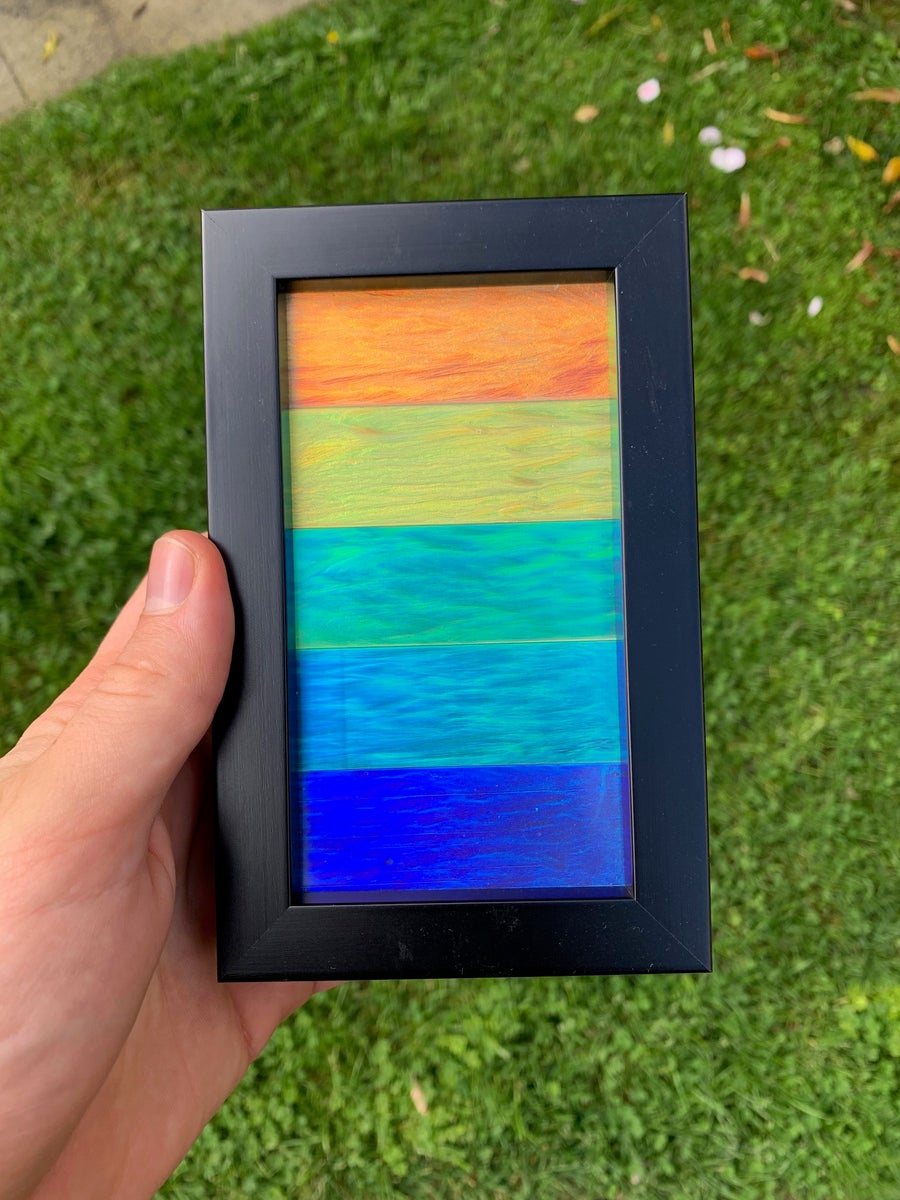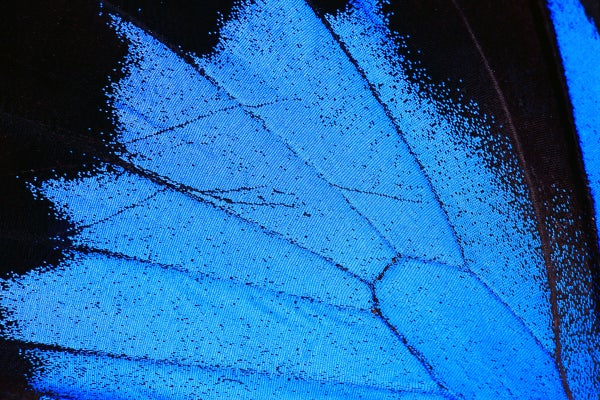The vibrant blue hues of morpho butterflies’ wings have long captivated not only lepidopterists but also chemists. The latter’s interest stems from the intricate nanoscale protein structures that are layered within the wings: their shapes act like prisms, reflecting a stunning cerulean color. Materials scientists hope to eventually harness these structures’ properties to make products such as paint and cosmetics—without dyes and pigments that can be harmful to human health and the environment.
Figuring out how to affordably apply this “structural color” concept to a wide range of products has been tricky. But now chemists at a Berkeley, Calif.–based start-up called Cypris Materials say they are closing in on a way to do so. Without using dyes or pigments, they say, they have developed colorants that can produce hues in the ultraviolet, visible and near-infrared regions of the electromagnetic spectrum—and that can be used in applications from automotive paints to printer inks and nail polish. “They’ve made progress in a field that desperately needs innovation, and it looks like they’ve made the jump from the laboratory to the real world. That’s super impressive,” says John Warner, a distinguished research fellow at the company Zymergen and a pioneer of green chemistry, who was not involved in Cypris Materials’ work.
Traditional pigments and dyes have been used for centuries to add color to fabric and paints and for other everyday applications. They impart various hues through the way they absorb or reflect light. Red dye in a shirt, for example, contains molecular components called chromophores, which absorb the wavelengths of light in all colors except for red—so red is what we see. But some of the chemicals involved, such as azo dyes, contain materials linked to cancer and other harmful effects. Many countries have banned them.
On supporting science journalism
If you're enjoying this article, consider supporting our award-winning journalism by subscribing. By purchasing a subscription you are helping to ensure the future of impactful stories about the discoveries and ideas shaping our world today.
Structural color, however, comes from microscopic structures whose varying shapes reflect or refract light in different ways. The tiny scales on a morpho butterfly’s wings, for example, are covered with minuscule ridges that have cross-ribs—a little like the profile of a fir tree. These formations refract specific light wavelengths to produce a brilliant blue. Other structures create similar effects: for example, helically arranged cellulose microfibers make marble berries glisten with a shiny, metallic shade of blue. Scientists are still studying the finer details of the ways structural color manifests in nature. But they already know that the sizes and volumes of the features in a structure and the material itself are what principally determine how light bounces off that structure—and what color results.

A sampple of Cypris Materials’ opalescent structural color spanning the visible spectrum. Credit: Ryan Pearson
Cypris Materials creates structure-based colorants using what are known as self-assembling block copolymers. They are long chains of molecules that in this case stitch together two different types of commonly used plastics, such as polyacrylates or polyesters. When formulated into a paint or ink and applied to a surface, these copolymers arrange themselves into neatly ordered layered structures that refract light. To grasp how this works, imagine gummy worms that are half yellow and half green, with each color representing a different plastic. If a big bagful of these worms were arranged so that each gummy’s yellow and green parts only touched the same colored halves of other gummies, they would form a multilayered structure. Cypris’s copolymers do this on their own when put into a solution, with the length of the polymer chain determining the wavelength of light reflected. Short copolymer chains refract shorter wavelengths of light: ultraviolet, blues and greens. Longer chains refract longer wavelengths in the orange, red and near-infrared parts of the spectrum.
Self-assembling copolymers are not new, but the company says it has made two key advancements: its materials self-assemble under everyday environmental conditions, such as when paint is applied, and can create the longer chains that reflect long wavelengths of light. “Being able to get it out into the redder colors—no one has been able to do that” with structural color, says Robert Grubbs, a Nobel Prize–winning chemistry professor at the California Institute of Technology and a co-founder of the company who works in an advisory role. “They’ve come a lot further than I thought was going to be possible.”
The new colorants come in a powdered form that Cypris Materials says can be incorporated into manufacturing processes—added to paint in an automotive spray gun, for example, or mixed into nail polish. The colorants also act like binders, chemicals that are added to hold pigments and dyes in solution while the paint dries on a surface. “We’re simplifying paint,” says the company’s co-founder and acting CEO Ryan Pearson. Traditionally, “people need to add in pigment. They also need to add in extra additives just to stabilize the paint. Not only are we removing the need for pigments and dyes, we’re taking out the need for all of the stuff around it to stabilize it.”
Other chemicals frequently added to paints to help stabilize the pigments include surfactants. It remains to be seen if the new colorants will render those chemicals unnecessary, but “if they’re able to replace surfactants or formulate without the use of alkylphenols [chemicals widely used in paints to prevent separation], that would certainly be a positive development in our view,” says Teresa McGrath, chief research officer at the Healthy Building Network, a nonprofit organization that promotes the use of sustainable and less toxic materials and is not linked to Cypris Materials.
The new method contrasts with other applications of structural color, such as those used to create films that can be applied to windows to improve insulation and save energy. That technique involves creating and combining many layers of film to achieve a structure that reflects infrared light. But those films can only be applied to certain surfaces, making the new structural color technology potentially more versatile.
The start-up’s colorants still have hurdles to overcome and possible limitations. For example, they may not be able to compete pricewise with some pigments, such as titanium dioxide. The company also still needs to do a full analysis of its copolymers and manufacturing processes to confirmthat its colorants are indeed safer and more environmentally friendly than traditional dyes and pigments. “It’s not going to be perfect,” Warner says. But “the enemy of the excellent is the perfect. Science works by these kinds of steps forward.”
